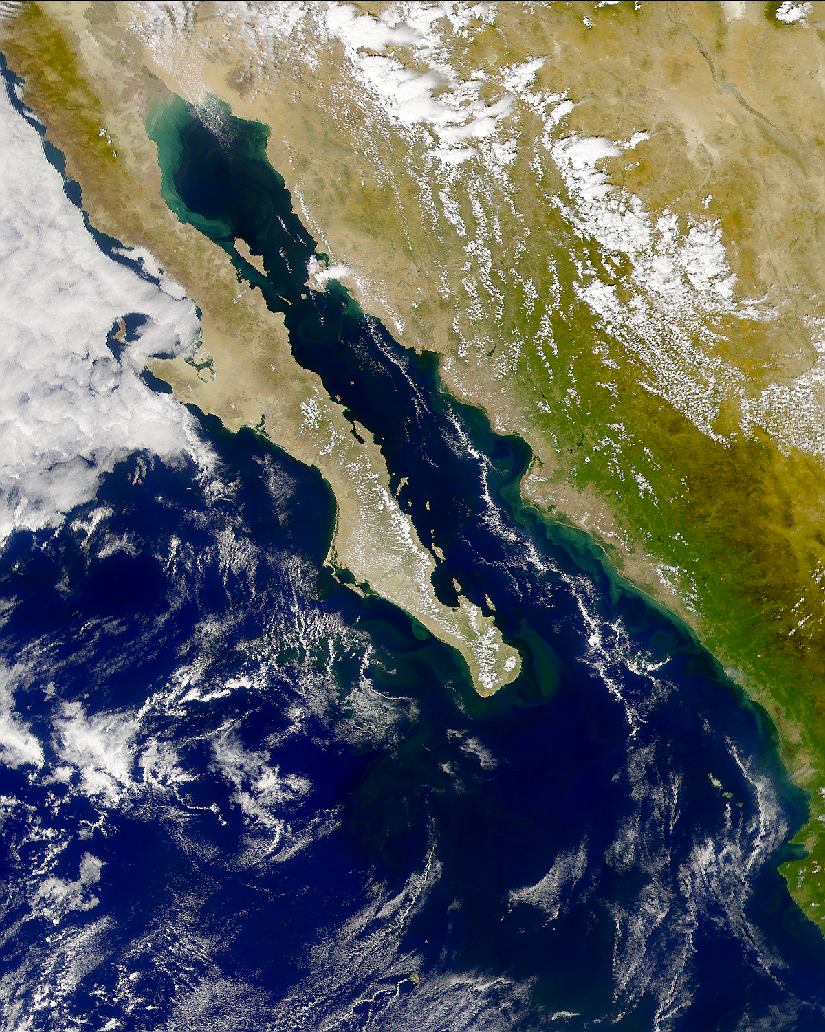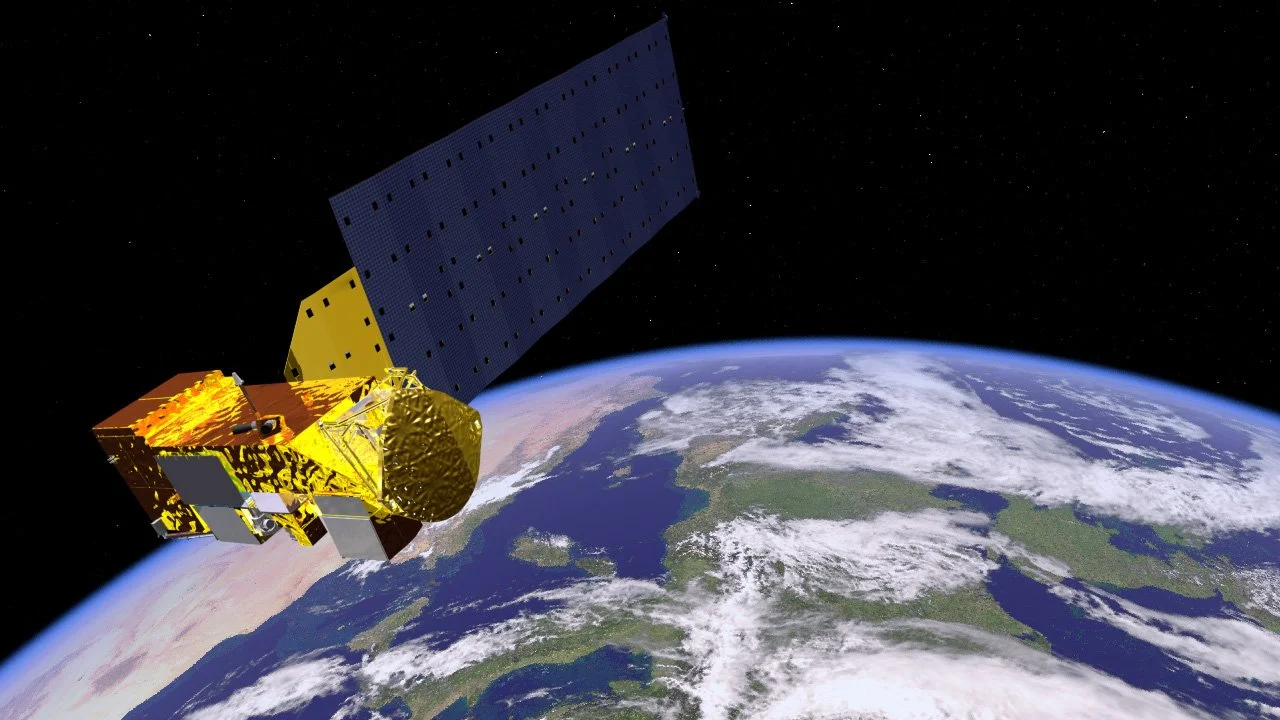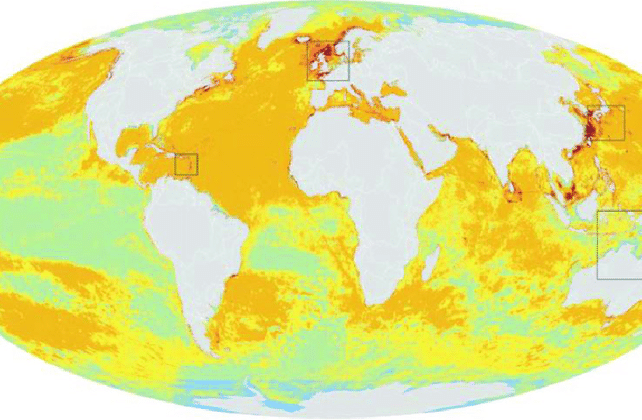
Interdisciplinary research. Real world impact.
My research is best described as environmental data science, leveraging data and tools from different disciplines to address a wide range of questions that span local to global scales. Much of my work sits at the interface of marine ecology and conservation science, but increasingly I am drawn to topics in other systems. I have been strongly influenced by more than two decades in residence at NCEAS.
Current Projects
Mapping Impacts of Global Food Production
Following our work to map the environmental footprint of food (see recent project below), we are now working to map how trade in food shifts footprints to distant locations and how that impacts biodiversity around the world.
Ocean Health Index in the Gulf of California
Building on past work developing and applying the Ocean Health Index (see recent projects below), we are collaborating with partners and expert from the region to conduct and launch an OHI assessment for the Gulf of California. Check out here for a short summary of the project.
Mapping Invasive Iceplant from Space
We are using machine learning to develop a rapid, efficient and repeatable iceplant (Carpobrotus edulis) detection data analysis pipeline that will be used to map the extent and rate of spread of iceplant within the Jack and Laura Dangermond Preserve, scale it to all of California to inform conservation strategies statewide, and refine it to detect changes in ecological variables in restoration sites to help monitor from space the outcomes of restoration activities
Sustainable Aquaculture Feed
One of the main environmental consequences of fed aquaculture (primarily finfish) is the impacts from the feed. As such, one of the best ways to improve the sustainability of fed aquaculture is to reduce the environmental cost of producing the feed. In collaboration with a team led by colleagues at the University of Tasmania, we are assessing the environmental efficiencies of different salmon feeds and the potential environmental footprints of these different feeds.
Digital Assets for Biodiversity
Across several different projects, we are exploring how to leverage existing technologies to remotely track and monitoring biodiversity at scale and process and use that information to inform management, conservation and restoration efforts.
Aquaculture & Fisheries
Aquaculture remains the fastest growing food sector on the planet, providing more than half of all seafood globally. This rapid growth has led to increasing conflict with existing fisheries, in particular related to concerns about loss of fishing grounds and the environmental footprint from fish farms displacing local fisheries. We are addressing if, where and how aquaculture might be replacing fisheries, where positive interactions between the sectors exist and how can we amplify those synergies, and how those dynamics might be affected by climate change.
Wildfire Resilience Index
Built on the success of NCEAS’ Ocean Health Index, the Wildfire Resilience Index (WRI) will calculate index scores for communities in the western regions of the US and Canada to inform decision-makers when crafting wildfire preparedness, response, and recovery policies.
Recent Projects
Mapping Cumulative Human Impacts to the Ocean
Over the last two decades I have led many projects mapping at global, regional and local scales the cumulative impact of human activities on marine systems. The work began with developing the methodology to do so and applying it globally. Since then I have co-led projects to apply the methods regionally around the world. I have also been involved in several projects that have adapted the methodology to particular taxa (billfish and plankton, marine mammals and seabirds) and all mapped marine taxa. Most recently we just published a study forecasting and mapping these pressures to midcentury.
Ocean Health Index
For the past sixteen years I have served as lead scientist for the Ocean Health Index project. The OHI captures the many different goals that people have for healthy marine systems, and provides indicators of those goals, as well as an overall Index across all goals. We launched our first global assessment and the accompanying website in August 2012. Details on our past and current activities can be found on our project website.
Mapping Wastewater Impacts to the Ocean
Globally and for the Meso American Reef and Gulf of California, we developed and implemented a model to estimate the amount and map the location of nitrogen and human pathogens coming from sewers, septic systems, and direct input into watersheds, and the distribution and impact of those pollutants into coastal ecosystems.
Cell-based Seafood
Recent advances in cellular agriculture - the process of producing meat from cell cultures - has people excited about the potential conversation benefits of introducing this new product to the market. In a collaboration with the Environmental Markets Solutions Lab, and a team of researchers, we developed a theory of change outlining the long and narrow path that this new technology would have to travel in order to see those perceived environmental benefits. Learn more about the four research questions underpinning the path to conservation benefits.
Ocean Tipping Points
I was part of a large collaborative project that sought to understand and characterize ecological thresholds, or “tipping points,” in coastal and ocean systems, in which small changes in human use or environmental conditions result in large, and sometimes abrupt, impacts to marine ecosystems. We focused our work in two case study locations – Hawaii and Haida Gwaii, British Columbia.
Environmental Footprint of Global Food Production
This project engaged a team of experts in a working group at NCEAS to put all food on the same table to assess and map the cumulative pressures of food production from ocean, aquatic and terrestrial foods (crops and livestock). The global assessment mapped the individual and cumulative pressures from climate emissions, nitrogen and phosphorous pollution, water use, and land/sea disturbance.
Aquaculture & Climate Change
Climate change is already affecting the production of food globally, and recent research suggests that aquaculture faces similar risks. We developed models and maps of the production potential for shellfish and finfish globally, based on biophysical constraints to growth, and modeled and mapped where and how much climate change would change these production potentials. We also assessed the potential vulnerability to climate change pressures of both marine and freshwater aquaculture within the United States, as well as potential differences in climate resilience for different species and production methods.
Climate Change Impacts on Biodiversity
Understanding species responses to climate change is a fundamental need for conservation planning. In collaboration with scientists from around the world, we conducted the first global synthesis of the response of marine species to climate change, which served as primary content for the marine species chapter of the 5th report of the International Panel on Climate Change (IPCC). We have also explored global rates of change of climate variables in the oceans, and the potential impact of these future changes on species and biodiversity. I collaborated with the Sustainable Fisheries Group to use these approaches and results to explore implications for fisheries management under climate change.














